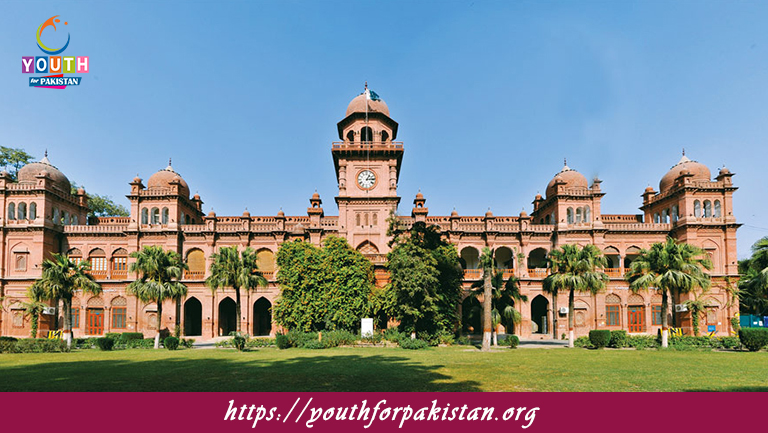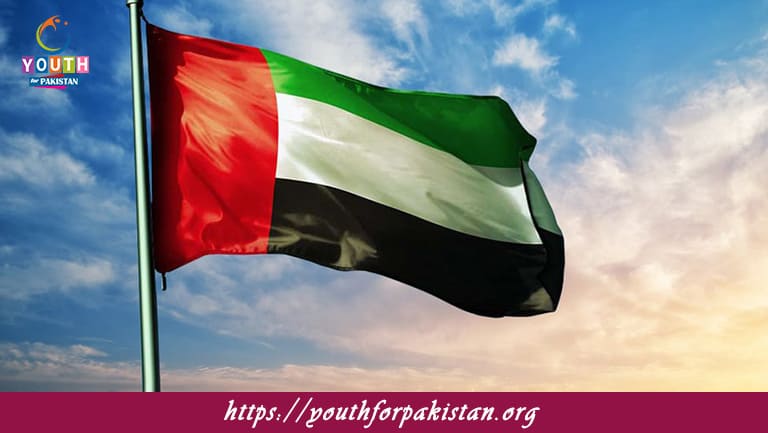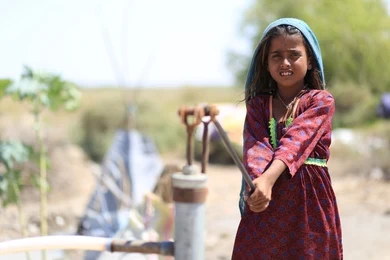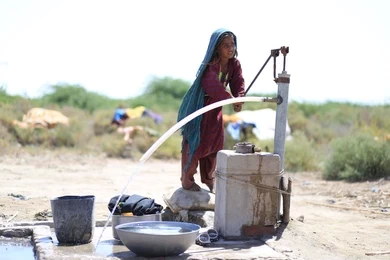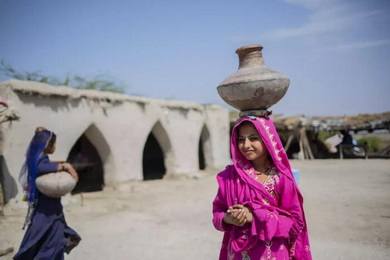Welcome to the World Famous Wars MCQs with Answers. In this post, we are sharing World Famous Wars Multiple Choice Questions and Answers in World General Knowledge section for various competitive exams in Pakistan. Find practice World Famous Wars practice test with answers here. Each question offers a chance to enhance your knowledge regarding World Famous Wars MCQs Online Test.
Which war, fought from 1914 to 1918, is known as the “Great War” and “The War to End All Wars”?
A) World War II
B) Korean War
C) World War I
D) Vietnam War
The “War of 1812” was fought between the United States and which other country?
A) United Kingdom
B) France
C) Spain
D) Germany
What war, fought from 1950 to 1953, was a conflict between North Korea (backed by China and the Soviet Union) and South Korea (backed by the United Nations and the United States)?
A) World War I
B) Korean War
C) World War II
D) Vietnam War
The “Spanish-American War” of 1898 resulted in the United States gaining control of which territories?
A) Puerto Rico, Philippines, Guam
B) Cuba, Haiti, Dominican Republic
C) Mexico, Panama, Costa Rica
D) Venezuela, Colombia, Ecuador
Which war, fought from 1939 to 1945, involved many countries and is often divided into the European and Pacific theaters?
A) World War I
B) Korean War
C) World War II
D) Vietnam War
The “Civil War” in the United States, fought from 1861 to 1865, was primarily a conflict between the North (Union) and the South (Confederacy). What was the main issue at stake?
A) Slavery
B) States’ rights
C) Economic inequality
D) Religious freedom
The “Vietnam War” was a conflict that lasted from the 1950s to 1975. It was a Cold War proxy war primarily between which two superpowers?
A) United States and Soviet Union
B) China and Japan
C) United Kingdom and France
D) Germany and Italy
The “Napoleonic Wars” were a series of conflicts involving the French Empire and various European coalitions. Who was the French military leader and emperor associated with these wars?
A) Winston Churchill
B) Adolf Hitler
C) Napoleon Bonaparte
D) Joseph Stalin
The “Mexican-American War” of 1846-1848 resulted in the United States acquiring which territories from Mexico?
A) Texas, Arizona, New Mexico, California
B) Florida, Louisiana, Alabama, Mississippi
C) Oregon, Washington, Idaho
D) Kansas, Nebraska, Oklahoma
The “Gulf War,” also known as the First Gulf War, took place in 1990-1991 and involved an international coalition led by the United States in response to the invasion of which country?
A) Kuwait
B) Saudi Arabia
C) Iraq
D) Iran
The “American Revolutionary War” (1775-1783) resulted in the Thirteen Colonies gaining independence from which European power?
A) France
B) Spain
C) United Kingdom
D) Germany
What war, fought from 1914 to 1918, is known for its trench warfare and included battles like the Battle of the Somme and the Battle of Verdun?
A) World War I
B) Korean War
C) World War II
D) Vietnam War
The “Russian Civil War” followed the Russian Revolution of 1917 and was primarily a conflict between which two factions?
A) Red Army (Bolsheviks) and White Army (anti-Bolshevik forces)
B) Russian Empire and Soviet Union
C) United Kingdom and France
D) Germany and Poland
The “Falklands War” of 1982 was a conflict between which two countries over the disputed Falkland Islands?
A) United Kingdom and Argentina
B) United States and Canada
C) Australia and New Zealand
D) France and Brazil
The “American Civil War” was primarily a conflict between the North (Union) and the South (Confederacy). What was the main issue at stake?
A) Slavery
B) States’ rights
C) Economic inequality
D) Religious freedom
The “Boer War,” also known as the Second Anglo-Boer War, was fought in South Africa at the turn of the 20th century. It was primarily a conflict between which two groups?
A) Boers (Afrikaners) and British
B) Zulus and Xhosas
C) Portuguese and Dutch
D) British and Germans
The “War of the Pacific” (1879-1884) was a conflict between Chile and which two neighboring countries?
A) Bolivia and Peru
B) Argentina and Brazil
C) Ecuador and Colombia
D) Paraguay and Uruguay
The “Russo-Japanese War” of 1904-1905 was a conflict between Russia and Japan over control of which region?
A) Alaska
B) Siberia
C) Korea and Manchuria
D) Crimea
The “War of the Spanish Succession” (1701-1714) was fought over who should succeed to the Spanish throne and involved many European powers. What treaty ended this war?
A) Treaty of Tordesillas
B) Treaty of Utrecht
C) Treaty of Versailles
D) Treaty of Paris
The “War of 1812” was fought between the United States and which other country?
A) United Kingdom
B) France
C) Spain
D) Germany
What war, fought from 1950 to 1953, was a conflict between North Korea (backed by China and the Soviet Union) and South Korea (backed by the United Nations and the United States?
A) World War I
B) Korean War
C) World War II
D) Vietnam War
The “Spanish-American War” of 1898 resulted in the United States gaining control of which territories?
A) Puerto Rico, Philippines, Guam
B) Cuba, Haiti, Dominican Republic
C) Mexico, Panama, Costa Rica
D) Venezuela, Colombia, Ecuador
Which war, fought from 1939 to 1945, involved many countries and is often divided into the European and Pacific theaters?
A) World War I
B) Korean War
C) World War II
D) Vietnam War
The “Civil War” in the United States, fought from 1861 to 1865, was primarily a conflict between the North (Union) and the South (Confederacy). What was the main issue at stake?
A) Slavery
B) States’ rights
C) Economic inequality
D) Religious freedom
The “Vietnam War” was a conflict that lasted from the 1950s to 1975. It was a Cold War proxy war primarily between which two superpowers?
A) United States and Soviet Union
B) China and Japan
C) United Kingdom and France
D) Germany and Italy
The “Napoleonic Wars” were a series of conflicts involving the French Empire and various European coalitions. Who was the French military leader and emperor associated with these wars?
A) Winston Churchill
B) Adolf Hitler
C) Napoleon Bonaparte
D) Joseph Stalin
The “Mexican-American War” of 1846-1848 resulted in the United States acquiring which territories from Mexico?
A) Texas, Arizona, New Mexico, California
B) Florida, Louisiana, Alabama, Mississippi
C) Oregon, Washington, Idaho
D) Kansas, Nebraska, Oklahoma
The “Gulf War,” also known as the First Gulf War, took place in 1990-1991 and involved an international coalition led by the United States in response to the invasion of which country?
A) Kuwait
B) Saudi Arabia
C) Iraq
D) Iran
The “American Revolutionary War” (1775-1783) resulted in the Thirteen Colonies gaining independence from which European power?
A) France
B) Spain
C) United Kingdom
D) Germany
What war, fought from 1914 to 1918, is known for its trench warfare and included battles like the Battle of the Somme and the Battle of Verdun?
A) World War I
B) Korean War
C) World War II
D) Vietnam War
The “Russian Civil War” followed the Russian Revolution of 1917 and was primarily a conflict between which two factions?
A) Red Army (Bolsheviks) and White Army (anti-Bolshevik forces)
B) Russian Empire and Soviet Union
C) United Kingdom and France
D) Germany and Poland
The “Falklands War” of 1982 was a conflict between which two countries over the disputed Falkland Islands?
A) United Kingdom and Argentina
B) United States and Canada
C) Australia and New Zealand
D) France and Brazil
The “American Civil War” was primarily a conflict between the North (Union) and the South (Confederacy). What was the main issue at stake?
A) Slavery
B) States’ rights
C) Economic inequality
D) Religious freedom
The “Boer War,” also known as the Second Anglo-Boer War, was fought in South Africa at the turn of the 20th century. It was primarily a conflict between which two groups?
A) Boers (Afrikaners) and British
B) Zulus and Xhosas
C) Portuguese and Dutch
D) British and Germans
The “War of the Pacific” (1879-1884) was a conflict between Chile and which two neighboring countries?
A) Bolivia and Peru
B) Argentina and Brazil
C) Ecuador and Colombia
D) Paraguay and Uruguay
The “Russo-Japanese War” of 1904-1905 was a conflict between Russia and Japan over control of which region?
A) Alaska
B) Siberia
C) Korea and Manchuria
D) Crimea
The “War of the Spanish Succession” (1701-1714) was fought over who should succeed to the Spanish throne and involved many European powers. What treaty ended this war?
A) Treaty of Tordesillas
B) Treaty of Utrecht
C) Treaty of Versailles
D) Treaty of Paris
The “Crimean War” (1853-1856) was primarily a conflict between Russia and which alliance of countries?
A) Ottoman Empire, France, United Kingdom, Sardinia
B) Austria, Prussia, Ottoman Empire, Sweden
C) United Kingdom, France, Spain, Netherlands
D) Germany, Austria-Hungary, Italy, Denmark
The “Iran-Iraq War” (1980-1988) was a protracted conflict between Iran and Iraq. What was the primary cause of the war?
A) Territorial disputes
B) Religious differences
C) Ethnic tensions
D) Oil resources
The “War of the Austrian Succession” (1740-1748) was a conflict that began when Maria Theresa succeeded to the Austrian throne. What famous composer served as a military officer during this war?
A) Ludwig van Beethoven
B) Wolfgang Amadeus Mozart
C) Joseph Haydn
D) Franz Schubert
The “War of 1812” was marked by several notable events, including the burning of which significant government building in Washington, D.C.?
A) White House
B) Capitol Building
C) Supreme Court
D) Pentagon
The “Six-Day War” in 1967 involved Israel and several neighboring Arab states. What territories did Israel capture during this conflict?
A) West Bank, Gaza Strip, Golan Heights, Sinai Peninsula
B) Jerusalem, Jordan River, Negev Desert
C) Mecca, Medina, Riyadh, Suez Canal
D) Kuwait, Qatar, Oman, United Arab Emirates
The “Mexican-American War” of 1846-1848 led to the signing of the Treaty of Guadalupe Hidalgo. Under this treaty, Mexico ceded a significant portion of its territory to the United States. What is the present-day U.S. state that was part of this acquisition?
A) California
B) Arizona
C) New Mexico
D) All of the above
The “War of the Pacific” (1879-1884) was a conflict between Chile and which two neighboring countries over valuable nitrate and guano resources in the Atacama Desert?
A) Bolivia and Peru
B) Ecuador and Colombia
C) Argentina and Brazil
D) Paraguay and Uruguay
The “Gulf War” (1990-1991) was prompted by Iraq’s invasion of Kuwait. What was the codename for the coalition-led military operation to liberate Kuwait?
A) Operation Desert Storm
B) Operation Enduring Freedom
C) Operation Iraqi Freedom
D) Operation Desert Shield
The “War of the Spanish Succession” (1701-1714) resulted in the recognition of which royal house as the legitimate rulers of Spain?
A) Bourbon
B) Habsburg
C) Romanov
D) Windsor
The “Opium Wars” were a series of conflicts between China and which other major colonial power?
A) United States
B) United Kingdom
C) France
D) Russia
The “Winter War” (1939-1940) was a conflict between Finland and which neighboring country that later became part of the Soviet Union?
A) Sweden
B) Norway
C) Estonia
D) Soviet Union
The “Spanish Civil War” (1936-1939) was a conflict between the Nationalists, led by Francisco Franco, and which opposing faction?
A) Republicans
B) Anarchists
C) Monarchists
D) Communists
The “Yom Kippur War” (1973) was a conflict between Israel and a coalition of Arab states, primarily Egypt and which other country?
A) Syria
B) Jordan
C) Iraq
D) Lebanon
The “Cuban Missile Crisis” in 1962 was a 13-day standoff between the United States and which other superpower over the placement of nuclear missiles in Cuba?
A) Soviet Union
B) China
C) France
D) United Kingdom
The “Rwandan Genocide” in 1994 resulted in the mass killing of which ethnic group in Rwanda?
A) Hutu
B) Tutsi
C) Zulu
D) Maasai
The “Iran-Iraq War” (1980-1988) was a protracted conflict between Iran and Iraq. What was the primary cause of the war?
A) Territorial disputes
B) Religious differences
C) Ethnic tensions
D) Oil resources
The “War of the Austrian Succession” (1740-1748) was a conflict that began when Maria Theresa succeeded to the Austrian throne. What famous composer served as a military officer during this war?
A) Ludwig van Beethoven
B) Wolfgang Amadeus Mozart
C) Joseph Haydn
D) Franz Schubert
The “War of 1812” was marked by several notable events, including the burning of which significant government building in Washington, D.C.?
A) White House
B) Capitol Building
C) Supreme Court
D) Pentagon
The “Six-Day War” in 1967 involved Israel and several neighboring Arab states. What territories did Israel capture during this conflict?
A) West Bank, Gaza Strip, Golan Heights, Sinai Peninsula
B) Jerusalem, Jordan River, Negev Desert
C) Mecca, Medina, Riyadh, Suez Canal
D) Kuwait, Qatar, Oman, United Arab Emirates
The “Mexican-American War” of 1846-1848 led to the signing of the Treaty of Guadalupe Hidalgo. Under this treaty, Mexico ceded a significant portion of its territory to the United States. What is the present-day U.S. state that was part of this acquisition?
A) California
B) Arizona
C) New Mexico
D) All of the above
The “War of the Pacific” (1879-1884) was a conflict between Chile and which two neighboring countries over valuable nitrate and guano resources in the Atacama Desert?
A) Bolivia and Peru
B) Ecuador and Colombia
C) Argentina and Brazil
D) Paraguay and Uruguay
The “Gulf War” (1990-1991) was prompted by Iraq’s invasion of Kuwait. What was the codename for the coalition-led military operation to liberate Kuwait?
A) Operation Desert Storm
B) Operation Enduring Freedom
C) Operation Iraqi Freedom
D) Operation Desert Shield
The “War of the Spanish Succession” (1701-1714) resulted in the recognition of which royal house as the legitimate rulers of Spain?
A) Bourbon
B) Habsburg
C) Romanov
D) Windsor
The “Opium Wars” were a series of conflicts between China and which other major colonial power?
A) United States
B) United Kingdom
C) France
D) Russia
The “Winter War” (1939-1940) was a conflict between Finland and which neighboring country that later became part of the Soviet Union?
A) Sweden
B) Norway
C) Estonia
D) Soviet Union
The “Spanish Civil War” (1936-1939) was a conflict between the Nationalists, led by Francisco Franco, and which opposing faction?
A) Republicans
B) Anarchists
C) Monarchists
D) Communists
The “Yom Kippur War” (1973) was a conflict between Israel and a coalition of Arab states, primarily Egypt and which other country?
A) Syria
B) Jordan
C) Iraq
D) Lebanon
The “Cuban Missile Crisis” in 1962 was a 13-day standoff between the United States and which other superpower over the placement of nuclear missiles in Cuba?
A) Soviet Union
B) China
C) France
D) United Kingdom
The “Rwandan Genocide” in 1994 resulted in the mass killing of which ethnic group in Rwanda?
A) Hutu
B) Tutsi
C) Zulu
D) Maasai
The “Gallipoli Campaign” during World War I involved a failed Allied attempt to capture which strategic peninsula?
A) Balkan Peninsula
B) Italian Peninsula
C) Gallipoli Peninsula
D) Sinai Peninsula
The “War of the Pacific” (1879-1884) was a conflict between Chile and which two neighboring countries over valuable nitrate and guano resources in the Atacama Desert?
A) Bolivia and Peru
B) Ecuador and Colombia
C) Argentina and Brazil
D) Paraguay and Uruguay
The “Gallipoli Campaign” during World War I involved a failed Allied attempt to capture which strategic peninsula?
A) Balkan Peninsula
B) Italian Peninsula
C) Gallipoli Peninsula
D) Sinai Peninsula
The “Korean War” (1950-1953) resulted in the division of Korea into North and South. Which superpowers backed North Korea and South Korea, respectively?
A) North Korea: Soviet Union, South Korea: United States
B) North Korea: China, South Korea: United Kingdom
C) North Korea: United States, South Korea: Soviet Union
D) North Korea: Japan, South Korea: France
The “Russo-Turkish War” of 1877-1878 resulted in the independence of which Balkan state from the Ottoman Empire?
A) Greece
B) Serbia
C) Bulgaria
D) Montenegro
The “Falklands War” of 1982 was a conflict between which two countries over the disputed Falkland Islands?
A) United Kingdom and Argentina
B) United States and Canada
C) Australia and New Zealand
D) France and Brazil
The “Gulf War” (1990-1991) was prompted by Iraq’s invasion of Kuwait. What was the codename for the coalition-led military operation to liberate Kuwait?
A) Operation Desert Storm
B) Operation Enduring Freedom
C) Operation Iraqi Freedom
D) Operation Desert Shield
The “Gallipoli Campaign” during World War I involved a failed Allied attempt to capture which strategic peninsula?
A) Balkan Peninsula
B) Italian Peninsula
C) Gallipoli Peninsula
D) Sinai Peninsula
The “Korean War” (1950-1953) resulted in the division of Korea into North and South. Which superpowers backed North Korea and South Korea, respectively?
A) North Korea: Soviet Union, South Korea: United States
B) North Korea: China, South Korea: United Kingdom
C) North Korea: United States, South Korea: Soviet Union
D) North Korea: Japan, South Korea: France
The “Russo-Turkish War” of 1877-1878 resulted in the independence of which Balkan state from the Ottoman Empire?
A) Greece
B) Serbia
C) Bulgaria
D) Montenegro
The “Gulf War” (1990-1991) was prompted by Iraq’s invasion of Kuwait. What was the codename for the coalition-led military operation to liberate Kuwait?
A) Operation Desert Storm
B) Operation Enduring Freedom
C) Operation Iraqi Freedom
D) Operation Desert Shield
The “Gallipoli Campaign” during World War I involved a failed Allied attempt to capture which strategic peninsula?
A) Balkan Peninsula
B) Italian Peninsula
C) Gallipoli Peninsula
D) Sinai Peninsula



